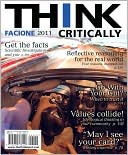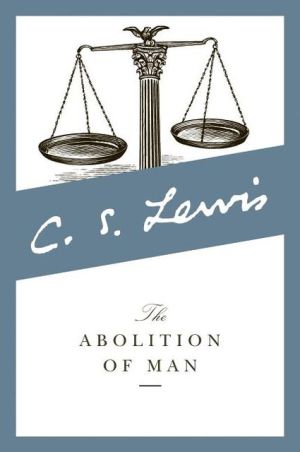Think Critically
Search in google:
THINK Critically is a cutting-edge self-reflective guide for improving critical thinking skills through careful analysis, reasoned inference and thoughtful evaluation of contemporary culture and ideas.Taking cues from everyday life — education, business, health sciences, social work, law, government policy issues and current events — THINK Critically bridges the principles of critical thinking with real-world application.With a highly-visual design, accessible narrative, and interactive approach, THINK Critically strengthens students’ skills and motivation to make reasoned judgments.This text introduces critical thinking by showcasing what vital and central positive habits of mind are, revisiting and building upon those skills throughout the text.Jam-packed with engaging examples and masterful exercises, THINK Critically explains how to clarify ideas, analyze arguments, and evaluate inductive, deductive, comparative, ideological and empirical reasoning.
Chapter 1: Purposeful, Reflective Judgment Risk and Uncertainty AboundCritical Thinking and a Free SocietyThe One and the ManyWhat Do We Mean by “Critical Thinking”?Expert Consensus Conceptualization“Critical Thinking” Does Not Mean “Negative Thinking”How to Get the Most Out of This BookEvaluating Critical ThinkingThe Students’ AssignmentThe Students’ StatementsThe Holistic Critical Thinking Scoring RubricChapter 2: The “Able” in “Willing and Able” to Think Critically Core Critical Thinking SkillsInterpreting and Analyzing the Consensus StatementThe Jury Is DeliberatingCritical Thinking Skills Fire In Many CombinationsStrengthening Our Core Critical Thinking SkillsThe Art of the Good QuestionSkills and Subskills DefinedInductive and Deductive ReasoningNurses’ Health Study - Decades of DataInductive ReasoningCosmos vs. ChaosDeductive ReasoningChapter 3: The “Willing” in “Willing and Able” to Think Critically A Group Engaged in Crisis-Level Critical ThinkingThe Spirit of a Strong Critical ThinkerPositive and Negative Habits of MindPreliminary Self-AssessmentResearch on the Disposition toward Critical ThinkingSeven Positive Critical Thinking Habits of MindNegative Habits of MindIs a Good Critical Thinker Automatically a Good Person?Building Positive Habits of MindReconnecting Skills and DispositionsChapter 4: Clarifying Ideas Interpretation, Context, and PurposeHow Precise Is Precise Enough?Language and ThoughtVagueness: “Does the Term Include This Case or Not?”Problematic VaguenessAmbiguity: “Does the Term Mean This, or Does It Mean That?”Problematic AmbiguityResolving Problematic Vagueness and AmbiguityContextualizingClarifying Original IntentNegotiating the MeaningUsing Qualifications, Exceptions, or ExclusionsStipulating the MeaningYour Language CommunitiesNational and Global Language CommunitiesLanguage Communities Formed of People with Like InterestsAcademic Disciplines as Language CommunitiesCritical Thinking and College Introductory CoursesChapter 5: Using Maps to Analyze Arguments and Decisions Analyzing and Mapping Arguments“Argument = (Reason + Claim)”Two Reasons, Two ArgumentsTwo Confusions to Avoid“Reason” and “Premise”Distinguishing Reasons from ConclusionMapping Claims and ReasonsMapping a Line of ReasoningMapping Implicit IdeasInterpreting Unspoken Reasons and Claims in ContextInterpreting the Use of Irony, Humor, Sarcasm, and MoreGiving Reasons and Making Arguments in Real LifeThe El Train Argument from Twelve Angry Men Huckabee and Stewart Discuss “The Pro-Life Issue — Abortion”Analyzing and Mapping Decisions“We Should Cancel the Spring Trip” #1“We Should Cancel the Spring Trip” #2Chapter 6: Evaluating Claims Assessing the Source — Whom Should I Trust?Claims Without ReasonsCognitive Development and Healthy SkepticismAuthority and ExpertiseLearned and ExperiencedOn-Topic, Up-to-Date, and Capable of ExplainingUnbiased and TruthfulFree of Conflicts of Interest, and Acting in the Client’s InterestUnconstrained, Informed, and Mentally StableAssessing the Substance — What Should I Believe?Donkey Dung DetectorMarketing, Spin, Disinformation, and PropagandaSlanted Language and Loaded ExpressionsIndependent VerificationCan the Claim Be Confirmed?Can the Claim Be Disconfirmed?Independent Investigation and the Q-Ray Bracelet CaseSuspending JudgmentChapter 7: Evaluating Arguments Giving Reasons and Making ArgumentsTruthfulnessLogical StrengthRelevanceNon-CircularityThe Four Tests for Evaluating ArgumentsTest #1: Truthfulness of the PremisesTest #2: Logical StrengthTest #3: RelevanceTest #4: Non-CircularityContexts for Argument Making and Evaluative TermsCommon Reasoning ErrorsFallacies of RelevanceAppeals to IgnoranceAppeals to the MobAppeals to EmotionAd Hominem AttacksStraw Man FallacyPlaying with WordsMisuse of AuthorityChapter 8: Evaluating Deductive and Inductive Reasoning Deductive Validity and LanguageReasoning Deductively about Declarative StatementsDenying the ConsequentAffirming the AntecedentDisjunctive SyllogismReasoning Deductively about Classes of ObjectsApplying a GeneralizationApplying an ExceptionThe Power of “Only”Reasoning Deductively about RelationshipsTransitivity, Reflexivity, and IdentityFallacies Masquerading as Valid Deductive ArgumentsAffirming the ConsequentDenying the AntecedentFalse ClassificationFallacies of Composition and DivisionFalse ReferenceInductions and the Evidence at HandEvaluating GeneralizationsWas the correct group sampled?Were the data obtained in an effective way?Were enough cases considered?Was the sample representatively structured?Coincidences, Correlations, and CausesCoincidencesCorrelationsCausesFallacies Masquerading as Strong Inductive ArgumentsErroneous GeneralizationPlaying with NumbersFalse DilemmaThe Gambler’s FallacyFalse CauseSlippery SlopeChapter 9: Snap Judgments — Heuristic Thinking Human Decision-Making SystemsThe “Two-Systems” Approach to Human Decision MakingReactive (System-1) ThinkingReflective (System-2) ThinkingThe Value of Each SystemHeuristics: Their Benefits and RisksIndividual Cognitive Heuristics1. Satisficing and 2. Temporizing3. Affect: “Go with your Gut”4. Simulation5. Availability6. Representation7. Association8. Stereotyping9. “Us vs. Them”XE "Optimistic Bias" 10. Power Differential11. Anchoring with Adjustment12. Illusion of Control13. Optimistic Bias and 14. Hindsight Bias15. Elimination by Aspect: “One Strike and You’re Out”16. Loss and Risk Aversion17. “All-or-Nothing”Heuristics in ActionChapter 10: Deciding What to Do and Doing It Dominance Structuring: A Fortress of Conviction“I Would Definitely Go to the Doctor”Explaining and Defending OurselvesA Poorly Crafted AssignmentMoving from Decision to ActionPhase 1: Pre-editingPhase 2: Identifying One Promising OptionPhase 3: Testing the Promising OptionPhase 4: Fortifying the To-Be-Chosen OptionBenefits and Risks of Dominance StructuringO.J. Simpson’s Vigorous DefenseSelf-Regulation Critical Thinking Skill StrategiesCritical Thinking Precautions when Pre-editingBe Sure About “the Problem”Specify the Decision-Critical AttributesBe Clear about Why an Option Is In or OutCritical Thinking Precautions When Identifying the Promising OptionScrutinize Options with Disciplined ImpartialityListen to Both Sides FirstCritical Thinking Precautions when Testing the Promising OptionUse All the Essential CriteriaTreat Equals as EqualsDiligently Engage in Truth-Seeking and Remain ImpartialCritical Thinking Precautions when Fortifying the To-Be-Chosen OptionBe Honest with YourselfCritical Thinking Strategies for Better Decision MakingTask Independent Teams with the Same ProblemDecide When It’s Time to DecideAnalyze Indicators and Make Mid-Course CorrectionsCreate a Culture of Respect for Critical ThinkingChapter 11: Comparative Reasoning — “This is Like That” Thinking Comparative, Ideological, and Empirical Inferences“This is Like That” — Recognizing Comparative ReasoningEvaluating Comparative InferencesDo the Four Tests of Acceptability Apply?Five Criteria for Evaluating Comparative ReasoningFamiliaritySimplicityComprehensivenessProductivityTestabilityShaping our View of the Universe for Two Thousand YearsThe Many Uses of Comparative InferencesChapter 12: Ideological Reasoning — “Top Down” Thinking“Top Down” Thinking — Recognizing Ideological ReasoningExamples of Ideological ReasoningThree Features of Ideological ReasoningIdeological Reasoning Is Deductive in CharacterIdeological Premises Are AxiomaticThe Argument Maker Takes the Ideological Absolutes on FaithEvaluating Ideological ReasoningAre the Ideological Premises True?Logical Strength and Ideological Belief SystemsRelevancy, Non-Circularity and Ideological ReasoningUses, Benefits and Risks of Ideological ReasoningChapter 13: Empirical Reasoning — “Bottom — Up” Thinking Recognizing Empirical ReasoningCharacteristics of Empirical ReasoningEmpirical Reasoning Is InductiveEmpirical Reasoning Is Self-CorrectiveEmpirical Reasoning Is Open to Independent VerificationHypotheses, Conditions and Measurable ManifestationsConducting an Investigation ScientificallyPerhaps the First Recorded Empirical InvestigationSteps in the Process an Extended ExampleEvaluating Empirical ReasoningBenefits and Risks Associated with Empirical Reasoning








